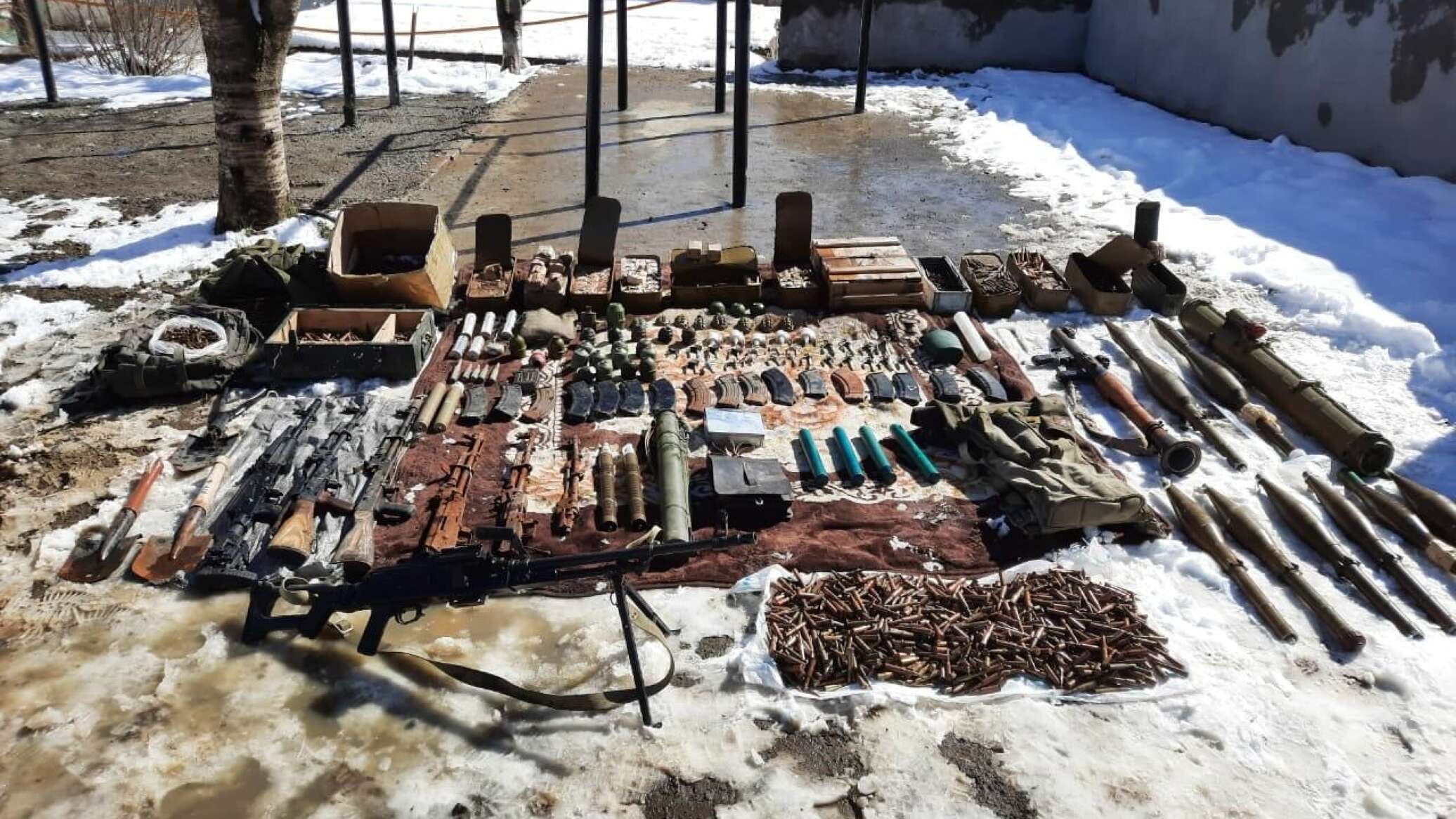The militarization of the once occupied Azerbaijani lands by Armenia has once again been proven with tens of thousands of guns, ammunition, and explosives being found in those territories post-liberation during 2021.
The Internal Affairs Ministry of Azerbaijan revealed this week the number of military firearms and equipment collected in the positions and strong points abandoned by the Armenian forces in the liberated lands. The findings include a total of 225 assault rifles, 102 grenade launchers, 68 machine guns, 64 anti-tank and anti-personnel guided missile systems, 10 mortar installations, 8 air defense systems, 721 grenades, 129 mines, and tens of thousands of shells and cartridges of various calibers.
The large number of abandoned weapons and ammunition in the territories kept under illegal occupation by Armenia for nearly three decades testifies to the heavy militarization of those lands despite UN Security Council resolutions calling for immediate withdrawal of the occupant forces.
The conflict between Armenia and Azerbaijan began with Yerevan’s illegal claims for the internationally recognized and historical lands of Azerbaijan. The conflict intensified following the Soviet Union’s dissolution in 1991 when Armenia launched a full-fledged military campaign against Azerbaijan. The hostilities, known as the First Karabakh War, lasted until a ceasefire was reached in 1994. Armenia occupied 20 percent of Azerbaijan’s internationally recognized territories, namely the Karabakh (Garabagh) region. Over 30,000 ethnic Azerbaijanis were killed and one million others were expelled from their lands in a brutal ethnic cleansing policy conducted by Armenia.
The Azerbaijani army restored Azerbaijan’s sovereignty over the occupied lands in the 44-day-long counter-offensive operations from September 27 through November 9, 2020. Azerbaijani forces liberated more than 300 settlements, including the cities of Jabrayil, Fuzuli, Zangilan, Gubadli and Shusha from nearly a 30-year-long illegal Armenian occupation. Armenia also returned the occupied Aghdam, Kalbajar, and Lachin districts to Azerbaijan as part of its obligations it took under the tripartite agreement signed on November 10, 2020, by Armenia, Azerbaijan, and Russia.
The post-war military findings in the liberated lands, including a military fortification in the Aghdam district, showed that so-called peace aspirations of Armenia were completely false. The two-story bunker that was built at 415 meters above sea level in Aghdam was used by Armenian forces as a command post over the years of occupation and during active warfare in 2020. The fortification was found to be equipped heavily with weaponry and ammunition, as well as modern navigation and observation devices, including visual and thermal cameras. The metal installment was reportedly able to accommodate up to 100 army personnel in multiple rooms and was designed to stand against long-term ground and aerial attacks.
The fortification in Aghdam was part of the so-called “Ohanyan line” – a complex system of military facilities established in 1994–2020 with the personal participation of Armenia’s former defense minister Seyran Ohanyan. The militarized corridor, which comprised complex military trenches, long and short-range firing positions, anti-tank trenches, wire fences, mixed minefields (both anti-personnel and anti-tank), and command posts, measured nearly 200 kilometers in length along the former line of contact between Armenian and Azerbaijani forces.
Azerbaijani forces broke the “Ohanyan line” completely during the 44-day counter-attack operations. The fall of the heavily militarized fortifications along the frontline was said to have a crucial impact on the retreat of the occupant Armenian forces.







 Armenian sappers commenced on Monday mine-clearance operations in the territories adjacent to the Saint Mary Church in village of Voskepar (Armenia...
Armenian sappers commenced on Monday mine-clearance operations in the territories adjacent to the Saint Mary Church in village of Voskepar (Armenia...
 Iran and Pakistan have signed eight cooperation documents in various fields, and agreed to strengthen ties to fight terrorism in the region.
Iran and Pakistan have signed eight cooperation documents in various fields, and agreed to strengthen ties to fight terrorism in the region.
 President Aliyev emphasized the critical role of the North-South Transport Corridor in fostering transport cooperation between Azerbaijan and Russi...
President Aliyev emphasized the critical role of the North-South Transport Corridor in fostering transport cooperation between Azerbaijan and Russi...



